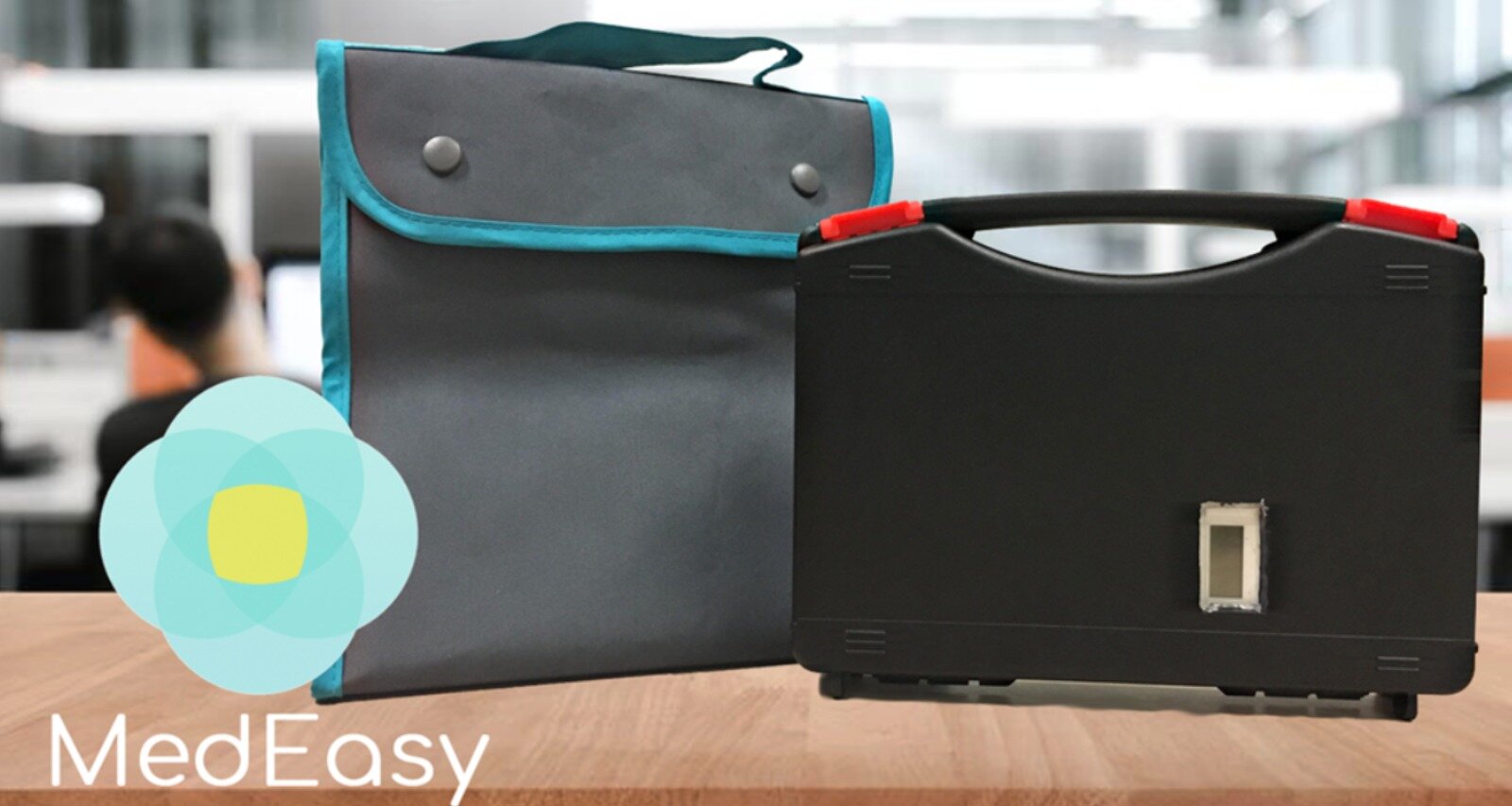MedEasy
A comprehensive electronic medical record system designed for remote areas
Role:
Product Designer, UX Researcher
Tools:
Flutter, Raspberry Pi, Sketch, Figma
Timeline:
3 years
Achievements
Silver Award, Chun Wo Social Innovation Award 2018
Best Social Impact, Chun Wo Social Innovation Award
Deployed in Phnom Penh, Gambia
EMRS for a New Era
MedEasy past, present, and future
The MedEasy technology a comprehensive mobile Electronic Medical Record System (EMRS) that:
efficiently identifies patients, and
stores, retrieves and visualises their medical charts,
enabling doctors to provide better healthcare. It is a tool specifically designed to ease and improve different tasks in a clinic workflow, thus allowing the doctors to focus their attention on what really matters:
healing people.
The Problem
In Cambodia’s slums and remote areas, there are several mobile clinics initiated by an NGO, One-2-One is still using paper form to record patient’s main information and diseases history. This paper archive, however, has proved itself to be very troublesome for the medical staff. This is because One-2-One commonly deals with patients that have chronic diseases and require frequent medical attention. This means that the archive soon grew to a size that was both too big and too heavy to carry comfortably into the slums. When noting this, it is important to bear in mind that the slums are located in the suburbs, in zones with difficult access; as such, minimising the material needed to bring into the mobile clinic is, and has always been, a top priority.
The Solution
The MedEasy solution
A light, durable EMRS: a system that can work flawlessly throughout week-long medical trips to rural areas without internet connection
Capable of operating in the most adverse conditions: working under sudden rainfall and extreme heat and humidity
Adjusted to the local, changing needs
hardware kit
The MedEasy hardware kit encases all the sensitive electronics in a secure, sturdy casing. It is made of a highly durable plastic composite with special insulation materials which help make the kit splash-proof.
power and server
The Raspberry Pi acts as the brain of the EMRS - it is the on-board server managing the patient data.
The small router enables communication between different clinic stations - it establishes a local hotspot that several devices can connect to, such that the EMRS can be handled by different people simultaneously.
The battery pack provides sufficient power for up to eight hours of uninterrupted use.
All of these components not only are readily available, but they are also the cheapest in the market and can be easily put together. With this simple engineering solution, we help guarantee that everyone can access, set-up and fix MedEasy.
mobile app
The MedEasy mobile app has been carefully crafted for maximum personalisation.
Each step within the app was developed in accordance to doctors’ existing workflow, such that there is practically no need for training. Unlike other EMRS, MedEasy does not impose a routine, but instead adapts to the medical staff’s existing way of doing things. Doctors love it.
Digging Deeper
In the Cambodian context, several issues become apparent when delivering healthcare services:
Doctors use paper for medical charts - the sheer volume these charts occupy make them cumbersome to carry into the slums. They are also more susceptible to becoming displaced and damaged during transport, as a result of Cambodia’s suddenly changing weather (e.g. monsoon rains)
Doctors have difficulties identifying patients - people in Cambodia do not use IDs, and the low literacy level among the targeted population means that they often cannot spell their names. This makes patient identification an unusually arduous task
Most patients suffer from chronic conditions - such diseases require continuous follow-ups to guarantee the condition is being contained
These particularities cause access to detailed medical charts to be hindered. Thus, the medical staff become unable to provide effective continuity of care, with highly deleterious effects on the patients’ health.
Designing an EMRS
Simple solutions often need intricate design thinking. MedEasy is the perfect product of that.
Problem Identification
We started with going to the slums of Phnom Penh, spending hours with the doctors and patients of One-2-One NGO to really understand the problems and their users.
Iterative Prototyping
Coming back to Hong Kong, we started designing each of the components, starting from hardware to app design. The process was so iterative - we had 5-6 different versions of the whole system as MVPs.
Every detail is important
When it came to designing the app, we paid extra importance to each.













